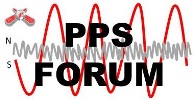1
MMR Support [MMR Members Only] / Time and Date Circuit
« on: August 23, 2017, 04:41:38 PM »
It seems like the time and date function on MMR Controller Board has had issues for some time. My machine is no different. Software updates have helped reduced the frequency of time and date errors, but not eliminated them on my machine. Since they don’t stop me from enjoying my game, I try to ignore them, but I wish they could be stopped forever.
Being a Senior Electrical Engineer, I understand that intermittent errors are the hardest types to troubleshoot and resolve. Sometimes having another set of eyes look at the problem will help (outside the design team). So, I had a few free minutes and decided to review the time and date circuit. It’s very simple design from a parts count point of view. However, the main component (a Real Time Clock IC P/N PCF8523) is far from simple…the date sheet is 78 pages.
After reading the data sheet, I came across one requirement that could be a problem. When the machine power is turned off, the chip will automatically switch power from board 3.3V to a 3V coin battery. However, the rate at which the board 3.3V drops to the 3V coin battery is very important for reliable operation. It must be lower than 0.7 V/ms.
To meet this requirement, a resistor (R28) and capacitor (CP2) configuration are used between the board 3.3V and the power pin on the chip. Where I think a problem exists is the capacitor value for CP2. The data sheet recommends a value of 3.3 uF to “assure the proper functionality of the battery switch-over”. What’s install is a 0.1 uF.
Is 0.1 uF enough? The answer is maybe. You would have to know how the power decays on the board and simulate it over the tolerance ranges of every component (so it works on all boards). Not a quick and simple task. Proving it works is a lot more effort than using the recommended or higher capacitance value. I hope CGC will verify the CP2 is the correct value they wanted.
Being a Senior Electrical Engineer, I understand that intermittent errors are the hardest types to troubleshoot and resolve. Sometimes having another set of eyes look at the problem will help (outside the design team). So, I had a few free minutes and decided to review the time and date circuit. It’s very simple design from a parts count point of view. However, the main component (a Real Time Clock IC P/N PCF8523) is far from simple…the date sheet is 78 pages.
After reading the data sheet, I came across one requirement that could be a problem. When the machine power is turned off, the chip will automatically switch power from board 3.3V to a 3V coin battery. However, the rate at which the board 3.3V drops to the 3V coin battery is very important for reliable operation. It must be lower than 0.7 V/ms.
To meet this requirement, a resistor (R28) and capacitor (CP2) configuration are used between the board 3.3V and the power pin on the chip. Where I think a problem exists is the capacitor value for CP2. The data sheet recommends a value of 3.3 uF to “assure the proper functionality of the battery switch-over”. What’s install is a 0.1 uF.
Is 0.1 uF enough? The answer is maybe. You would have to know how the power decays on the board and simulate it over the tolerance ranges of every component (so it works on all boards). Not a quick and simple task. Proving it works is a lot more effort than using the recommended or higher capacitance value. I hope CGC will verify the CP2 is the correct value they wanted.


